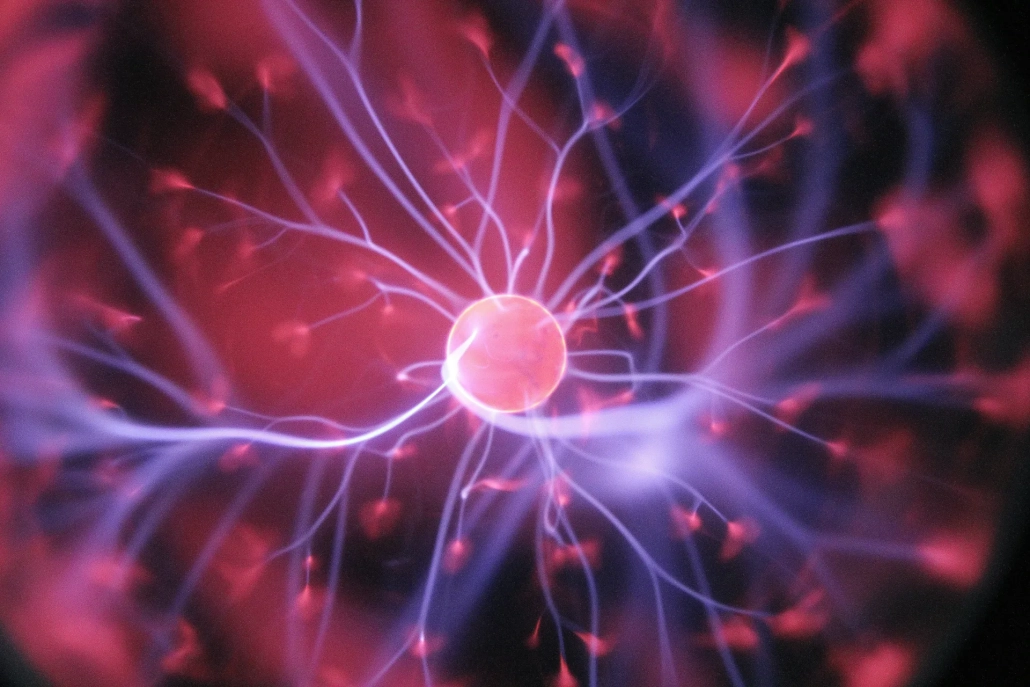The 4th state of matter: exploring plasma
When we think about matter, the three most common states that come to mind are: solid, liquid, and gas. These are the forms of matter we encounter in everyday life: ice, water, and steam, for example, are all familiar manifestations of these states. However, there is a lesser-known, but equally important, state of matter called plasma, often referred to as the fourth state of matter. Plasma is not as widely recognized as the other states because it is not something we typically encounter in our daily lives, yet it plays a crucial role in the universe, accounting for approximately 99% of the visible matter.
But what is the fourth state of matter? And why is plasma, the fourth state of matter, considered so important in science and industry? In this article, we will dive into the fascinating world of plasma, examining its properties, formation, applications, and the role it plays in the cosmos.
What is plasma: the fourth state of matter
Plasma, often described as the 4th state of matter, is a supercharged form of gas. Unlike solids, liquids, and gases, plasma consists of free electrons and ions—atoms that have lost or gained electrons. This ionization gives plasma unique properties that distinguish it from the other states of matter. In simple terms, plasma can be thought of as an electrified gas where the particles move freely, creating an energetic and dynamic environment.
To understand plasma as the 4th state of matter, it’s helpful to consider the process through which it forms. Typically, when a gas is heated to extremely high temperatures or subjected to a strong electromagnetic field, the energy is enough to strip electrons from the atoms in the gas. This creates a mixture of positively charged ions and negatively charged electrons, which together form plasma. Thus, when a gas is transformed into a plasma, it transitions from a neutral state to an ionized one.
From gas to plasma: the transition
The transformation from gas to plasma is a process called ionization, where enough energy is added to a gas to break the bonds that hold electrons to their parent atoms. When this happens, the atoms lose or gain electrons, becoming charged ions. At this point, the gas behaves differently, taking on the characteristics of plasma.
In many ways, plasma the fourth state of matter is similar to gas in that it doesn’t have a fixed shape or volume. However, plasma has distinctive properties that set it apart:
- Conductivity: Plasma is an excellent conductor of electricity due to the presence of free-moving ions and electrons.
- Magnetic fields: Plasmas respond to and can generate magnetic fields, making them highly dynamic and responsive to electromagnetic forces.
- Glow: In many cases, plasma emits light, as seen in lightning, neon signs, and plasma TVs.
This transformation from gas to plasma typically occurs in environments with extreme temperatures, such as the surface of the sun or in controlled environments like fusion reactors and industrial processes.
Examples of plasma in nature and technology
Although plasma might seem obscure to most of us, we actually encounter it more often than we realize. One of the most visible and dramatic examples of plasma in nature is lightning. During a lightning strike, air is ionized, turning it into plasma, which is why we see the brilliant flash of light. The sun and other stars are also massive spheres of plasma, where nuclear fusion reactions occur at incredibly high temperatures, creating the radiant energy we depend on for life on Earth.
In our everyday lives, we also encounter plasma in various technologies. For instance, neon signs operate by passing electrical currents through a gas, which turns into plasma and produces light. Similarly, plasma TVs use small pockets of ionized gas to create bright and vivid images.
Another key application of plasma is in the field of plasma activation, where plasma is used to modify the surface properties of materials, enhancing their adhesion wettability, or chemical reactivity without affecting their bulk properties.
Additionally, plasma is the fourth state of matter that plays a critical role in advanced fields like nuclear fusion research, where scientists are attempting to replicate the conditions inside the sun to create a sustainable and nearly limitless source of energy.
Plasma, the fourth state of matter: why it is important
Now that we understand what plasma, the fourth state of matter, is and where it can be found, the next question is: why it is important? The answer lies in state of plasma’s unique properties, which make it incredibly useful across various fields of science, technology, and industry.
- Energy generation: In the quest for clean and renewable energy, plasma holds tremendous potential. Fusion reactors aim to harness the power of plasma to produce energy in a manner similar to the sun, offering a promising alternative to fossil fuels and nuclear fission.
- Space exploration: Plasma is the dominant state of matter in the universe. In outer space, interstellar and intergalactic mediums are composed of plasma, and understanding how it behaves is essential for space travel and exploration. Plasma propulsion systems are being developed to make space travel faster and more efficient.
- Industrial applications: Plasma is used in a variety of industrial processes, from plasma etching in semiconductor manufacturing to plasma spraying or plasma cleaning. Plasma is also used in sterilization techniques, especially in the medical field, to sterilize sensitive equipment without the need for high temperatures or harsh chemicals.
- Scientific research: Plasma physics is a vibrant area of research that aims to uncover the mysteries of matter under extreme conditions.
Plasma and the universe: the cosmic connection
Perhaps one of the most fascinating aspects of plasma is its prevalence throughout the universe. While we might not encounter plasma frequently on Earth, it dominates the universe. Stars, including our sun, are massive balls of plasma where nuclear fusion reactions take place, generating light and heat. Beyond stars, vast regions of space are filled with plasma. This includes the solar wind, which is a stream of charged particles emitted by the sun, and the interstellar medium, the matter that exists between stars in galaxies.
In summary, plasma is the 4th state of matter: a dynamic and powerful form of matter that plays an essential role both on Earth and across the universe. Its unique properties, make plasma not only a fascinating topic of scientific inquiry but also a highly practical tool in technology and industry.
As we continue to explore the potential of plasma, from energy production to space exploration, it becomes increasingly clear that this fourth state of matter holds the key to some of the most exciting advancements in science and technology.



